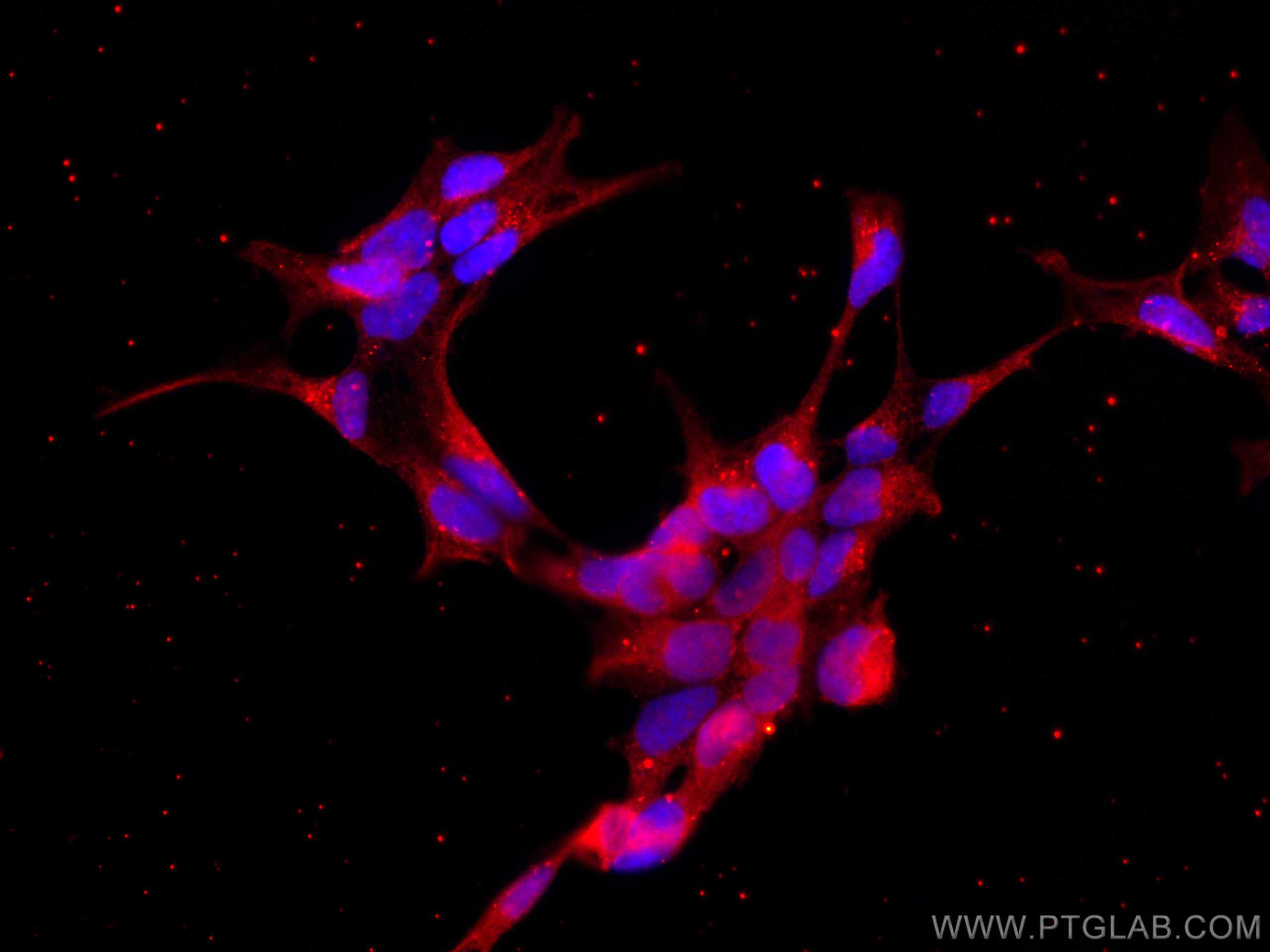- Featured Product
- KD/KO Validated
CRACR2A Monoklonaler Antikörper
CRACR2A Monoklonal Antikörper für IF
Wirt / Isotyp
Maus / IgG1
Getestete Reaktivität
human
Anwendung
IF
Konjugation
CoraLite®594 Fluorescent Dye
CloneNo.
4C1F5
Kat-Nr. : CL594-66787
Synonyme
Galerie der Validierungsdaten
Geprüfte Anwendungen
| Erfolgreiche Detektion in IF | HEK-293-Zellen |
Empfohlene Verdünnung
| Anwendung | Verdünnung |
|---|---|
| Immunfluoreszenz (IF) | IF : 1:50-1:500 |
| Sample-dependent, check data in validation data gallery | |
Produktinformation
CL594-66787 bindet in IF CRACR2A und zeigt Reaktivität mit human
| Getestete Reaktivität | human |
| Wirt / Isotyp | Maus / IgG1 |
| Klonalität | Monoklonal |
| Typ | Antikörper |
| Immunogen | CRACR2A fusion protein Ag7525 |
| Vollständiger Name | EF-hand calcium binding domain 4B |
| Berechnetes Molekulargewicht | 46 kDa |
| Beobachtetes Molekulargewicht | 80-90 kDa |
| GenBank-Zugangsnummer | BC004524 |
| Gene symbol | EFCAB4B |
| Gene ID (NCBI) | 84766 |
| Konjugation | CoraLite®594 Fluorescent Dye |
| Excitation/Emission maxima wavelengths | 588 nm / 604 nm |
| Form | Liquid |
| Reinigungsmethode | Protein-G-Reinigung |
| Lagerungspuffer | BS mit 50% Glyzerin, 0,05% Proclin300, 0,5% BSA, pH 7,3. |
| Lagerungsbedingungen | Bei -20°C lagern. Vor Licht schützen. Aliquotieren ist bei -20oC Lagerung nicht notwendig. 20ul Größen enthalten 0,1% BSA. |
Hintergrundinformationen
CRACR2A (also called CRAC regulator 2A, EFCAB4B) is a cytoplasmic Ca2+ sensor predominantly expressed in lymphocytes. It has two isoforms: a long isoform of CRACR2A-a round 80-90 kDa and a short isoform of CRACR2A-c around 46 kDa. CRACR2A-c is involved in the regulation of Ca2+-NFAT signaling. CRACR2A-a exists in a GTP- and Golgi membrane-bound form in resting T cells, while it is present in subsynaptic vesicles that translocated from the Golgi region to the immunological synapse after ligation of TCRs. This antibody recognizes both of CRACR2A-c and CRACR2A-a.
Protokolle
| Produktspezifische Protokolle | |
|---|---|
| IF protocol for CL594 CRACR2A antibody CL594-66787 | Protokoll herunterladen |
| Standard-Protokolle | |
|---|---|
| Klicken Sie hier, um unsere Standardprotokolle anzuzeigen |


